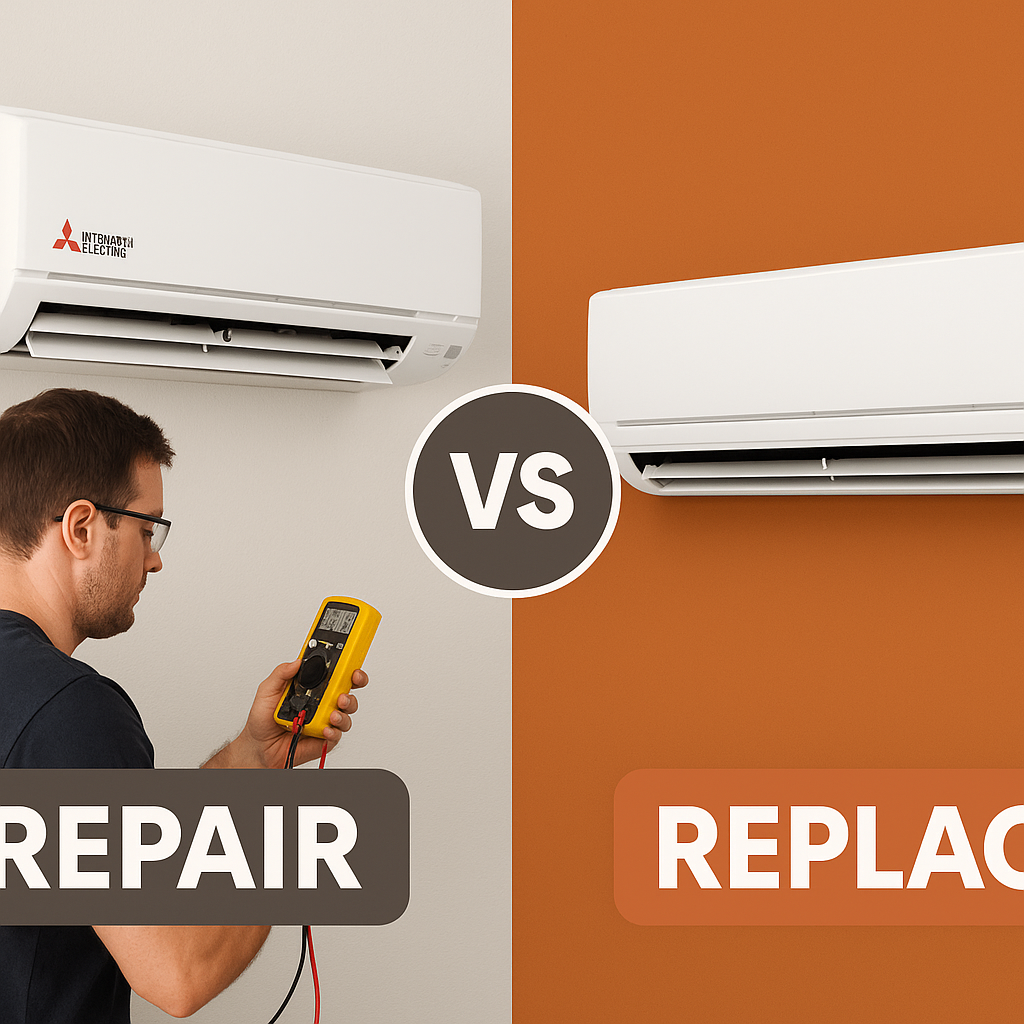
Manhattan might be beautiful, but all places feel equally uncomfortable when the heat is intolerable. The only respite within the four walls of one’s home is a working ductless air conditioning system—often referred to as a mini-split—that is a convenient and energy-efficient way to keep one’s home comfortable throughout the year. However, just like any other HVAC unit, ductless units don’t last forever. When performance drops, efficiency suffers, or breakdowns become frequent, homeowners are often faced with a familiar yet frustrating decision: is it time for ductless AC repair in Manhattan, or is it time to invest in a replacement?
Deciding what to do is never easy and straightforward, especially when one takes in consideration the repair costs, system age, energy consumption, and available state incentives. Homeowners need to abide by some guide that can help them come to a decision.
How New York homeowners Evaluate Their Ductless AC system?
Find out the Age of the Ductless System
The typical lifespan of a well-maintained ductless AC unit is between 12 and 20 years. If the system is over a decade old, it may not have the energy efficiency or smart capabilities of newer models. For the system which is less than 10 years old, then ductless air conditioning repair in Manhattan is the best option, only if issues are minor and infrequent.
If the unit is more than 12–15 years then it is better to consider replacement, particularly if the system’s performance is declining or if Manhattan homeowners are facing a costly repair.
Also, older systems may use R-22 refrigerant, which is hard to come by in current times. Servicing R-22 systems is not only more expensive but also less environmentally friendly.
Evaluate Frequency and Cost of Repairs
It is essential to note how often the system requires service. If homeowners find that they are making repeated calls to the HVAC technician more than once a year, that’s a sign the system is becoming unreliable.
It is better to ask a few questions to oneself before making a decision:
- Are you facing repairs cost more than 50% of what a new unit would cost?
- Are you doing repairs that only offer short-term relief before another issue arises?
- Is the same component repeatedly failing?
The 50% Rule is a common benchmark: if repair costs exceed 50% of the cost of a new system, and the unit is past half of its expected lifespan, it’s typically smarter to replace it.
Consider Energy Efficiency Ratings (SEER & HSPF)
Modern ductless AC systems offer significantly better energy efficiency than older models. This translates into monthly utility savings—especially important in Manhattan, where both hot summers and cold winters demand year-round performance.
SEER (Seasonal Energy Efficiency Ratio) measures cooling efficiency. The higher the SEER, the more efficient the unit.
HSPF (Heating Seasonal Performance Factor) measures heating efficiency, crucial for cold New York winters.
Older ductless units may have SEER ratings as low as 10–13, while newer ENERGY STAR® rated systems boast SEER ratings above 20 and HSPF ratings of 9 or more.
If the utility bills have been creeping up and the current unit’s SEER rating is below what is required now, a replacement could offer significant long-term savings.
Review Home Comfort and Performance
Is the ductless AC still cooling (and heating) the home evenly and reliably?
Uneven temperatures, longer run times, loud noises, and weak airflow can all be indicators that the ductless ac system is losing efficiency. These performance issues not only impact comfort but can also be signs that the unit is on its last legs.
Explore State Incentives and Rebates
New York State offers compelling financial incentives for upgrading to a more energy-efficient ductless mini-split system through programs such as NY Clean Heat and NYSERDA (New York State Energy Research and Development Authority).
These programs may include:
- Cash rebates for installing ENERGY STAR® certified systems
- Low-interest financing options for new energy-efficient HVAC installations
- Tax credits under federal programs, especially for systems that meet the highest energy performance standards
These incentives can significantly reduce the upfront cost of a new ductless system, making replacement a more attractive and affordable option.
Environmental and Long-Term Financial Considerations
Replacing an outdated ductless system helps reduce the home’s carbon footprint. New systems are designed with low-GWP (Global Warming Potential) refrigerants and advanced inverter technology that uses energy more responsibly.
In financial terms, while repairs might seem cheaper in the short term, they can become a money pit. A new system typically comes with a 10–12-year warranty and fewer repair needs, offering peace of mind and cost predictability.
Consult a Local HVAC Expert
Every home and HVAC situation is unique. Before making a final decision, it is essential to consult a licensed HVAC professional who is familiar with New York State’s climate and incentive programs. A professional can:
- Assess the health of the current ductless ac unit
- Offer a cost comparison between repair and replacement
- Recommend efficient models eligible for rebates
- Provide insight into optimal sizing and zoning for your home
If the ductless AC unit is aging, has become inefficient, or prone to frequent breakdowns, Manhattan homeowners should not be ignoring the signs. Repairs can only provide a temporary fix, but they may not always be the most economical or energy-efficient choice in the long run. When you are in two minds about what choice to make, consider the performance of the unit, and the energy bills be your guide.

Over 35 years of experienced HVAC engineer and blogger with years of experience writing about various topics related to multiple types of HVAC systems installation, repair, and maintenance. I have been in this industry since my apprenticeship in 1985. Our team emphasizes quality workmanship while ensuring customer satisfaction is our top priority.




Leave a Reply
You must be logged in to post a comment.